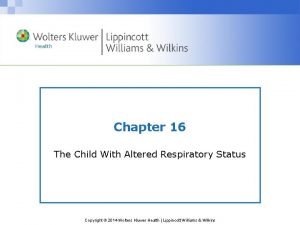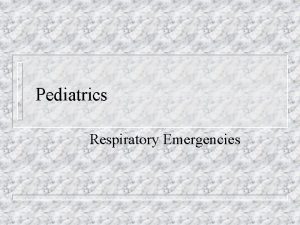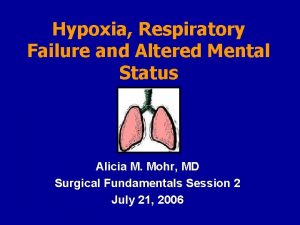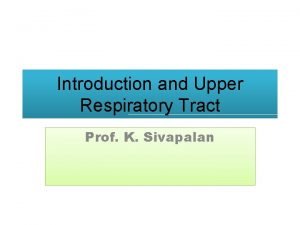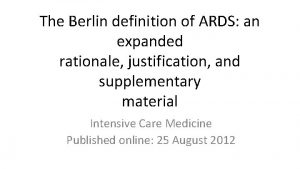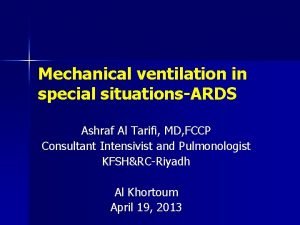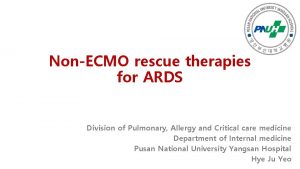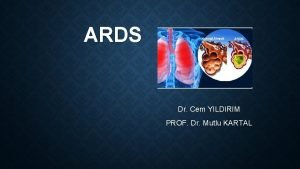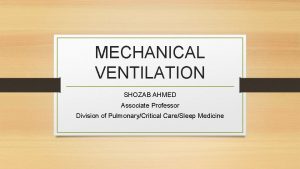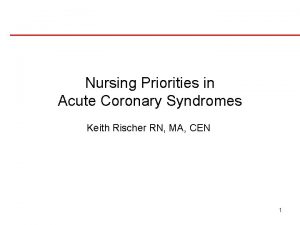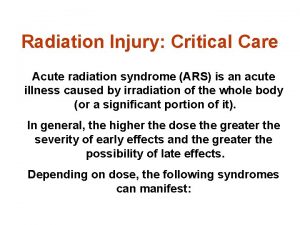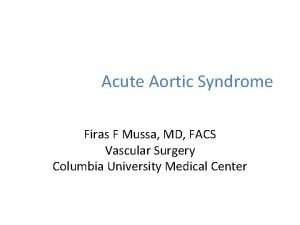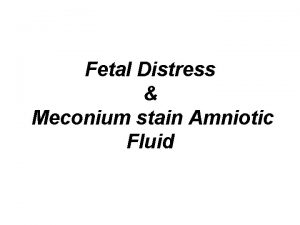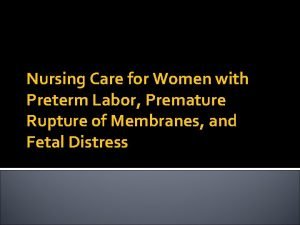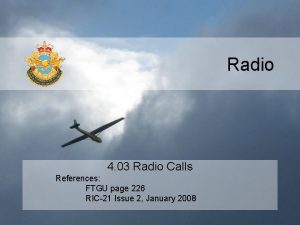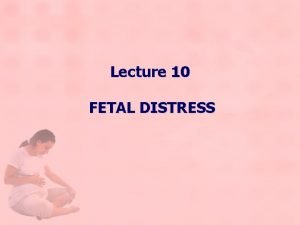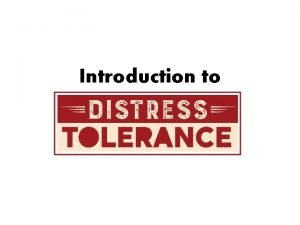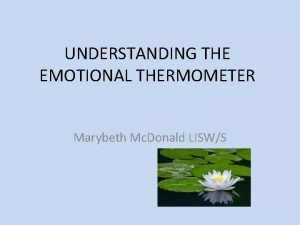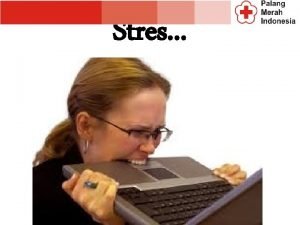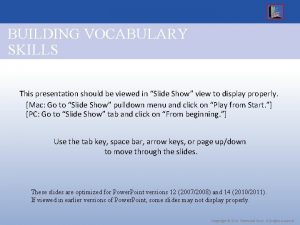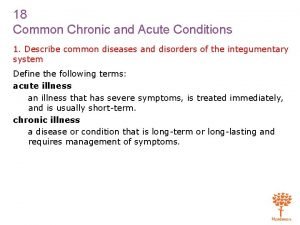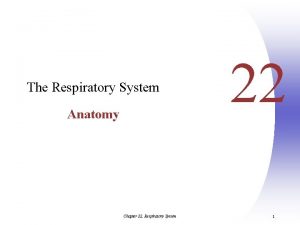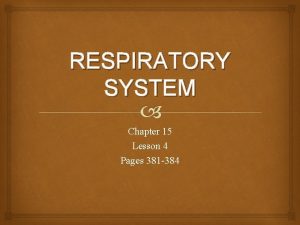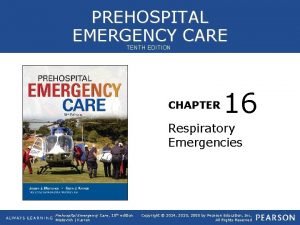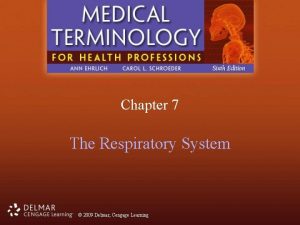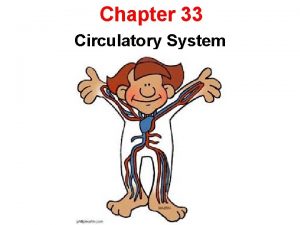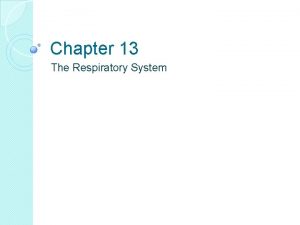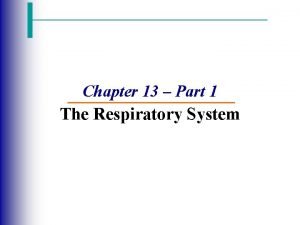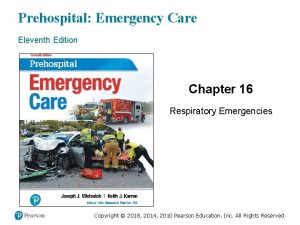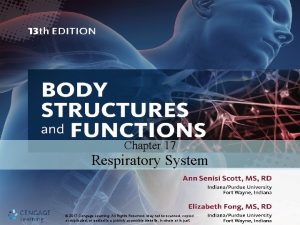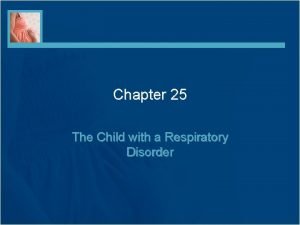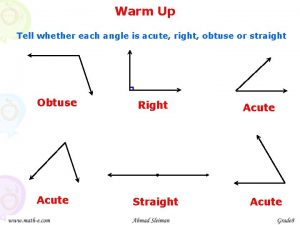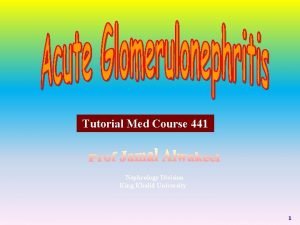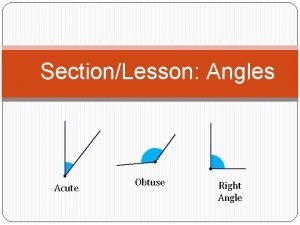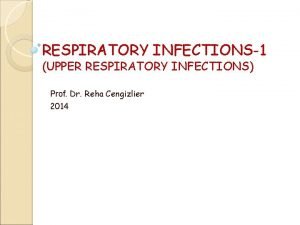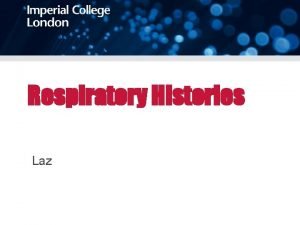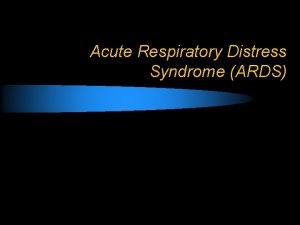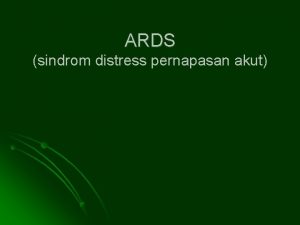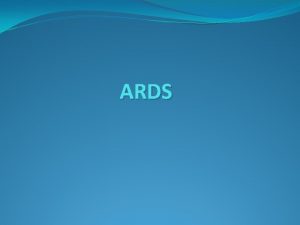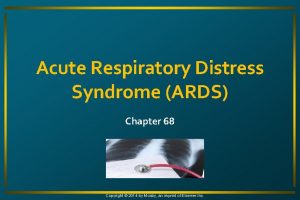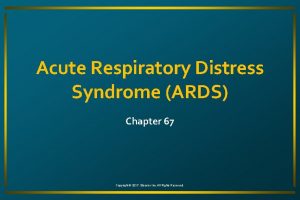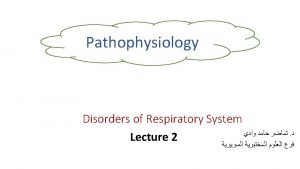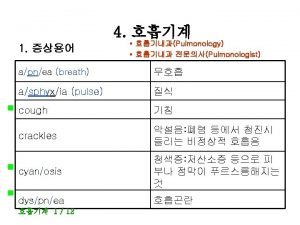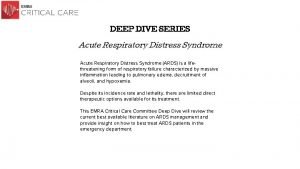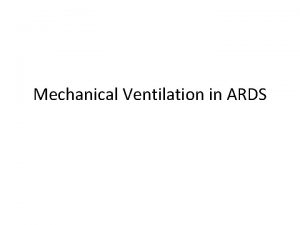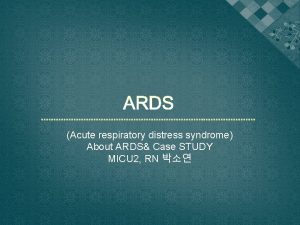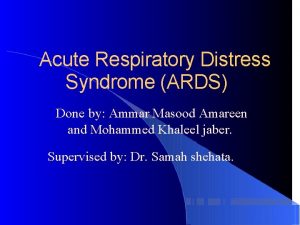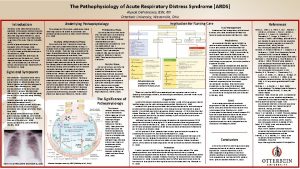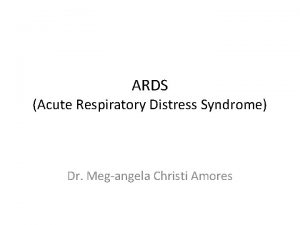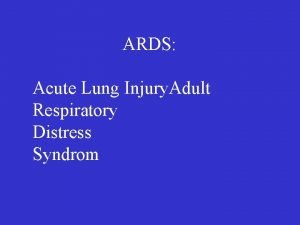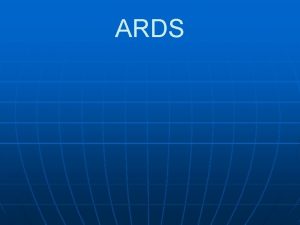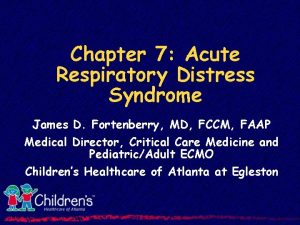Acute Respiratory Distress Syndrome ARDS Chapter 67 Copyright





































































- Slides: 69

Acute Respiratory Distress Syndrome (ARDS) Chapter 67 Copyright © 2017, Elsevier Inc. All Rights Reserved.

Acute Respiratory Distress Syndrome (ARDS) • Sudden progressive form of acute respiratory failure • Alveolar capillary membrane becomes damaged and more permeable to intravascular fluid • Alveoli fill with fluid Copyright © 2017, Elsevier Inc. All Rights Reserved.

Normal Gas Exchange Unit Copyright © 2017, Elsevier Inc. All Rights Reserved.

Stages of Edema Formation in ARDS Copyright © 2017, Elsevier Inc. All Rights Reserved.

ARDS • Results • Severe dyspnea • Hypoxia • Decreased lung compliance • Diffuse pulmonary infiltrates • 150, 000 cases annually • 50% mortality rate Copyright © 2017, Elsevier Inc. All Rights Reserved.

Case Study (©i. Stockphoto/Thinkstock) • J. P. , an 82 -year-old woman, is brought to the ED from a long-term care facility. • 4 days ago she aspirated her lunch. Copyright © 2017, Elsevier Inc. All Rights Reserved.

Case Study (©i. Stockphoto/Thinkstock) • The physician on call for the facility diagnosed her with aspiration pneumonia. • She was started on antibiotic therapy of azithromycin (Zithromax). Copyright © 2017, Elsevier Inc. All Rights Reserved.

Case Study (©i. Stockphoto/Thinkstock) • During the past 24 hours, J. P. has developed progressive dyspnea and restlessness. • On admission to the ED, she is confused and agitated. • At times she is gasping for air. • Chest x-ray shows diffuse infiltrates. Copyright © 2017, Elsevier Inc. All Rights Reserved.

Case Study (©i. Stockphoto/Thinkstock) • What was the cause of J. P. ’s respiratory distress? • What are her risks for ARDS? • What is her priority of care? Copyright © 2017, Elsevier Inc. All Rights Reserved.

Etiology and Pathophysiology • Develops from a variety of direct or indirect lung injuries • Most common cause is sepsis • Exact cause for damage to alveolarcapillary membrane not known • Pathophysiologic changes of ARDS thought to be due to stimulation of inflammatory and immune systems Copyright © 2017, Elsevier Inc. All Rights Reserved.

Pathophysiology of ARDS Copyright © 2017, Elsevier Inc. All Rights Reserved.

Etiology and Pathophysiology • Neutrophils are attracted and release mediators, producing changes in lungs • ↑ Pulmonary capillary membrane permeability • Destruction of elastin and collagen • Formation of pulmonary microemboli • Pulmonary artery vasoconstriction Copyright © 2017, Elsevier Inc. All Rights Reserved.

Etiology and Pathophysiology • Injury or exudative phase • 1– 7 days after initial lung injury or host insult • Neutrophils adhere to pulmonary microcirculation • Damage to vascular endothelium • ↑ Capillary permeability Copyright © 2017, Elsevier Inc. All Rights Reserved.

Etiology and Pathophysiology • Injury or exudative phase • Engorgement of peribronchial and perivascular interstitial space • Fluid crosses into alveolar space • Intrapulmonary shunt develops as alveoli fill with fluid, and blood passing through cannot be oxygenated Copyright © 2017, Elsevier Inc. All Rights Reserved.

Etiology and Pathophysiology • Injury or exudative phase • Alveolar cells type 1 and 2 are damaged • Surfactant dysfunction → atelectasis • Hyaline membranes line alveoli • Contribute to fibrosis and atelectasis • Leads to decreased gas exchange capability and lung compliance Copyright © 2017, Elsevier Inc. All Rights Reserved.

Etiology and Pathophysiology • Injury or exudative phase • Interstitial and alveolar edema and atelectasis • Severe V/Q mismatch and shunting of pulmonary capillary blood result in refractory hypoxemia • Unresponsive to increasing O 2 concentrations • Lungs become less compliant • Higher airway pressures must be generated Copyright © 2017, Elsevier Inc. All Rights Reserved.

Etiology and Pathophysiology • Injury or exudative phase • ↑ Work of breathing (WOB) • ↑ Respiratory rate • ↓ Tidal volume • Produces respiratory alkalosis from increase in CO 2 removal • ↓ CO 2 and tissue perfusion Copyright © 2017, Elsevier Inc. All Rights Reserved.

Case Study (©i. Stockphoto/Thinkstock) • J. P. has been in the hospital for 1 week. • She has been diagnosed with ARDS. Copyright © 2017, Elsevier Inc. All Rights Reserved.

Case Study (©i. Stockphoto/Thinkstock) • She is on IV antibiotics and oxygen therapy, but continues to struggle to breath. • Her O 2 is 88% on 6 L via a face mask. Copyright © 2017, Elsevier Inc. All Rights Reserved.

Case Study (©i. Stockphoto/Thinkstock) • What is she experiencing clinically? • What is she at risk for in terms of ARDS progression? Copyright © 2017, Elsevier Inc. All Rights Reserved.

Etiology and Pathophysiology • Reparative or proliferative phase • 1– 2 weeks after initial lung injury • Influx of neutrophils, monocytes, and lymphocytes • Fibroblast proliferation • Lung becomes dense and fibrous • Lung compliance continues to ↓ Copyright © 2017, Elsevier Inc. All Rights Reserved.

Etiology and Pathophysiology • Reparative or proliferative phase • Hypoxemia worsens • Thickened alveolar membrane • Diffusion limitation and shunting • If reparative phase persists, widespread fibrosis results • If phase is stopped, lesions will resolve Copyright © 2017, Elsevier Inc. All Rights Reserved.

Etiology and Pathophysiology • Fibrotic or chronic/late phase • 2– 3 weeks after initial lung injury • Lung is completely remodeled by collagenous and fibrous tissues Copyright © 2017, Elsevier Inc. All Rights Reserved.

Etiology and Pathophysiology • Fibrotic or chronic/late phase • ↓ Lung compliance • ↓ Area for gas exchange • Hypoxemia continues • Pulmonary hypertension • Results from pulmonary vascular destruction and fibrosis Copyright © 2017, Elsevier Inc. All Rights Reserved.

Clinical Progression • Some persons survive acute phase of lung injury • Pulmonary edema resolves • Complete recovery • Survival chances are poor for those who enter fibrotic phase • Requires long-term mechanical ventilation Copyright © 2017, Elsevier Inc. All Rights Reserved.

Clinical Manifestations: Early • Dyspnea, tachypnea, cough, restlessness • Chest auscultation may be normal or may reveal fine, scattered crackles • ABGs • Mild hypoxemia and respiratory alkalosis caused by hyperventilation Copyright © 2017, Elsevier Inc. All Rights Reserved.

Clinical Manifestations: Early • Chest x-ray may be normal or reveal minimal scattered interstitial infiltrates • Edema may not show until 30% increase in fluid content in the lungs Copyright © 2017, Elsevier Inc. All Rights Reserved.

Case Study (©i. Stockphoto/Thinkstock) • As J. P. ’s symptoms worsen, she works hard to breathe. • She develops diffuse crackles throughout her lungs. • She is pale and diaphoretic. • Vital signs: BP 158/98, HR 114, RR 32, O 2 sat 84%. Copyright © 2017, Elsevier Inc. All Rights Reserved.

Case Study (©i. Stockphoto/Thinkstock) • What diagnostic tests would be indicated for J. P? • What is the next step in treatment for her? Copyright © 2017, Elsevier Inc. All Rights Reserved.

Clinical Manifestations: Late • Symptoms worsen with increased fluid accumulation and decreased lung compliance • Pulmonary function tests reveal decreased compliance, lung volumes, and functional residual capacity (FRC) Copyright © 2017, Elsevier Inc. All Rights Reserved.

Clinical Manifestations: Late • Tachycardia, diaphoresis, changes in mental status, cyanosis, and pallor • Diffuse crackles and coarse crackles • Hypoxemia despite increased FIO 2 • Increasing WOB despite initial findings of normal Pa. O 2 or Sa. O 2 Copyright © 2017, Elsevier Inc. All Rights Reserved.

Clinical Manifestations • As ARDS progresses, profound respiratory distress requires endotracheal intubation and PPV • Chest x-ray termed whiteout or white lung because of consolidation and widespread infiltrates throughout lungs • Leaves few recognizable air spaces Copyright © 2017, Elsevier Inc. All Rights Reserved.

Chest X-Ray of Person with ARDS Copyright © 2017, Elsevier Inc. All Rights Reserved.

ARDS • Complications of treatment • Ventilator-associated pneumonia • Barotrauma • Volutrauma • High risk for stress ulcers • Renal failure Copyright © 2017, Elsevier Inc. All Rights Reserved.

Complications • Ventilator-associated pneumonia (VAP) • Strategies for prevention of VAP • Strict infection control measures • Ventilation protocol bundle • • Elevate HOB 30 to 45 degrees Daily “sedation holidays” Venous thromboembolism prophylaxis Daily oral care with chlorhexidine Copyright © 2017, Elsevier Inc. All Rights Reserved.

Complications • Barotrauma • Rupture of overdistended alveoli during mechanical ventilation • XUTE Respiratory Distress Syndrome Clinical Network (ARDSNet) • Ventilate with smaller tidal volumes • Higher Pa. CO 2 - permissive hypercapnia Copyright © 2017, Elsevier Inc. All Rights Reserved.

Complications • Volutrauma • Occurs when large tidal volumes are used to ventilate noncompliant lungs • Alveolar fracture and movement of fluids and proteins into alveolar spaces • Smaller tidal volumes or pressure-control ventilation is now standard in ARDS Copyright © 2017, Elsevier Inc. All Rights Reserved.

Complications • Stress ulcers • Bleeding from stress ulcers occurs in 30% of patients with ARDS on mechanical ventilation • Management strategies • Correction of predisposing conditions • Prophylactic antiulcer drugs • Early initiation of enteral nutrition Copyright © 2017, Elsevier Inc. All Rights Reserved.

Complications • Renal failure • Occurs from decreased renal perfusion and subsequent decreased delivery of O 2 to kidneys • From hypotension, hypoxia, or hypercapnia • May also be caused by nephrotoxic drugs used to treat ARDS-related infections Copyright © 2017, Elsevier Inc. All Rights Reserved.

Case Study (©i. Stockphoto/Thinkstock) • J. P. ’s daughter arrives to be with her. • She shares that her mother had smoked for over 30 years, but quit 20 years ago. • She asks you if smoking contributed to her respiratory problems now. Copyright © 2017, Elsevier Inc. All Rights Reserved.

Nursing Assessment • History of lung disease • Exposures to lung toxins • Tobacco, alcohol, or drug use • Related hospitalizations • Thoracic or spinal cord trauma • Severe obesity Copyright © 2017, Elsevier Inc. All Rights Reserved.

Nursing Assessment • Use of O 2, inhalers, nebulizers, OTC drugs, immunosuppressant therapy • Previous intubation • Thoracic or abdominal surgery • Exercise • Immunizations Copyright © 2017, Elsevier Inc. All Rights Reserved.

Nursing Assessment • Eating habits, change in appetite • Weight gain/loss • Fatigue • Dizziness • Dyspnea, wheezing, cough, sputum, palpitations, swollen feet • Changes in sleep pattern, use of CPAP Copyright © 2017, Elsevier Inc. All Rights Reserved.

Nursing Assessment • Headache • Chest pain or tightness • Anxiety • Restlessness, agitation • Pale, cool, clammy or warm, flushed skin • Peripheral edema or cyanosis Copyright © 2017, Elsevier Inc. All Rights Reserved.

Nursing Assessment • Shallow, increasing respiratory rate progressing to decreased rate • Use of accessory muscles • Asymmetric chest expansion • Abnormal breath sounds • Pleural friction rub Copyright © 2017, Elsevier Inc. All Rights Reserved.

Nursing Assessment • Tachycardia progressing to bradycardia • Hypertension progressing to hypotension • Pulsus paradoxus, JVD, pedal edema • Abdominal distention, ascites • Somnolence, confusion, delirium • Changes in p. H, Pa. CO 2, Pa. O 2, Sa. O 2 Copyright © 2017, Elsevier Inc. All Rights Reserved.

Nursing Assessment • Decreased tidal volume, FVC • Abnormal x-ray • Abnormal central venous or pulmonary artery pressures • Initial increased CO • As hypoxemia, hypercapnia, and acidosis become more severe, CO will decrease Copyright © 2017, Elsevier Inc. All Rights Reserved.

Case Study (©i. Stockphoto/Thinkstock) • J. P. is now on mechanical ventilation, sedated to allow her to rest, and beginning to improve slowly. • Her O 2 saturation is now 92% and her blood gases are slowly returning to normal. Copyright © 2017, Elsevier Inc. All Rights Reserved.

Nursing Diagnoses • Ineffective airway clearance • Ineffective breathing pattern • Risk for imbalanced fluid volume • Anxiety • Impaired gas exchange • Imbalanced nutrition: less than body requirements Copyright © 2017, Elsevier Inc. All Rights Reserved.

Planning • Following recovery • Pa. O 2 within normal limits for age or at baseline on room air • Sa. O 2 >90% • Resolution of precipitating factor(s) for ARDS • Clear lungs on auscultation Copyright © 2017, Elsevier Inc. All Rights Reserved.

Respiratory Therapy • Oxygen administration • Primary goal is to correct hypoxemia • Initially nasal cannula or face mask with highflow systems used to maximize O 2 delivery • Sp. O 2 continuously monitored Copyright © 2017, Elsevier Inc. All Rights Reserved.

Respiratory Therapy • Modest to severe ARDS and refractory hypoxemia • Need intubation with mechanical ventilation to maintain the Pa. O 2 at acceptable levels Copyright © 2017, Elsevier Inc. All Rights Reserved.

Respiratory Therapy • Positive pressure ventilation • PEEP at 5 cm H 2 O compensates for loss of glottic function • Opens collapsed alveoli • Apply PEEP at 3 to 5 cm H 2 O increments • Higher levels of PEEP may be used in patients with ARDS Copyright © 2017, Elsevier Inc. All Rights Reserved.

Respiratory Therapy • Positive pressure ventilation • Can compromise venous return to right side of heart • Decreases preload, CO, and BP • Higher levels of PEEP • Can hyperinflate alveoli • Can result in barotrauma or volutrauma Copyright © 2017, Elsevier Inc. All Rights Reserved.

Respiratory Therapy • Alternative modes of mechanical ventilation and respiratory therapies if hypoxemia persists • Airway pressure release ventilation • Pressure control inverse ratio ventilation • High-frequency ventilation • Permissive hypercapnia Copyright © 2017, Elsevier Inc. All Rights Reserved.

Respiratory Therapy • External devices • Extracorporeal membrane oxygenation (ECMO) • Extracorporeal CO 2 removal (ECCO 2 R) • Blood passes across gas-exchanging membrane outside the body • Oxygenated blood is returned to the body Copyright © 2017, Elsevier Inc. All Rights Reserved.

Respiratory Therapy • Positioning strategies • Turn from supine to prone position • May be sufficient to reduce inspired O 2 or PEEP • When in supine position mediastinal and heart contents place more pressure on lungs than when in prone • Predisposes patient to atelectasis • Fluid pools in dependent regions of lung Copyright © 2017, Elsevier Inc. All Rights Reserved.

Proning Copyright © 2017, Elsevier Inc. All Rights Reserved.

Roto. Prone Bed Roto. Prone bed. (Arjo. Huntleigh. Reprinted with permission. ) Note: The Roto. Prone Delta Therapy System allows clinicians to place patients in the prone position, safely and effectively. This product is not specifically indicated for the treatment of ARDS or VAP. Copyright © 2017, Elsevier Inc. All Rights Reserved.

Respiratory Therapy • Other positioning strategies • Continuous lateral rotation therapy (CLRT) • Continuous, slow side-to-side turning <40 degrees • 18 of every 24 hours • Kinetic therapy • Patient rotated side-to-side >40 degrees Copyright © 2017, Elsevier Inc. All Rights Reserved.

Continuous Lateral Rotation Copyright © 2017, Elsevier Inc. All Rights Reserved.

Medical Supportive Therapy • Maintenance of cardiac output and tissue perfusion • Hemodynamic monitoring via a central venous or pulmonary artery catheter • Monitor CO and BP • Sample blood for ABGs Copyright © 2017, Elsevier Inc. All Rights Reserved.

Medical Supportive Therapy • Maintenance of nutrition/fluid balance • Enteral or parenteral feedings are started • Monitor hemodynamic parameters • (e. g. , CVP, stroke volume variation) • Monitor daily weight, intake and output Copyright © 2017, Elsevier Inc. All Rights Reserved.

Evaluation • No abnormal breath sounds • Effective cough and expectoration • Normal respiratory rate, rhythm, and depth • Synchronous thoracoabdominal movement • Appropriate use of accessory muscles Copyright © 2017, Elsevier Inc. All Rights Reserved.

Evaluation • Decreased or absent peripheral edema • Normal pulmonary artery or pulmonary artery wedge pressures • Decreased anxiety • Verbalization of positive attitude toward outcome Copyright © 2017, Elsevier Inc. All Rights Reserved.

Evaluation • Pa. O 2 and Pa. CO 2 within normal ranges or at baseline • Maintenance of weight or weight gain • Serum albumin and protein within normal ranges Copyright © 2017, Elsevier Inc. All Rights Reserved.

Audience Response Question A patient’s ABG results include p. H 7. 31, Pa. CO 2 50 mm Hg, Pa. O 2 51 mm Hg, and HCO 3 24 m. Eq/L. Oxygen is administered at 2 L/min, and the patient is placed in high-Fowler’s position. An hour later, the ABGs are repeated with results of p. H 7. 36, Pa. CO 2 40 mm Hg, Pa. O 2 60 mm Hg, and HCO 3 24 m. Eq/L. What is most important for the nurse to do? a. Increase the oxygen flow rate to 4 L/min. b. Document the findings in the patient’s record. c. Reposition the patient in a semi-Fowler’s position. d. Prepare the patient for endotracheal intubation and mechanical ventilation. Copyright © 2017, Elsevier Inc. All Rights Reserved.

Audience Response Question When assessing a patient with sepsis, which finding would alert the nurse to the onset of acute respiratory distress syndrome (ARDS)? a. Sp. O 2 of 80% b. Use of accessory muscles of respiration c. Fine, scattered crackles on auscultation of the chest d. ABGs of p. H 7. 33, Pa. CO 2 48 mm Hg, and Pa. O 2 80 mm Hg Copyright © 2017, Elsevier Inc. All Rights Reserved.

Audience Response Question A patient with severe chronic lung disease is hospitalized with respiratory distress. Which finding would suggest to the nurse that the patient has developed rapid decompensation? a. An Sp. O 2 of 86% b. A blood p. H of 7. 33 c. Agitation or confusion d. Pa. CO 2 increases from 48 to 55 mm Hg Copyright © 2017, Elsevier Inc. All Rights Reserved.
 Respiratory distress
Respiratory distress Respiratory distress
Respiratory distress Respiratory distress nasal flaring
Respiratory distress nasal flaring Acute upper respiratory infection unspecified คือ
Acute upper respiratory infection unspecified คือ Kryteria berlińskie ards
Kryteria berlińskie ards What is peep in ventilator
What is peep in ventilator Ards
Ards Ards
Ards Mutlu kartal
Mutlu kartal Ards permissive hypercapnia
Ards permissive hypercapnia Ards management
Ards management Ards
Ards Static compliance calculation
Static compliance calculation Ards definition
Ards definition Ards leczenie
Ards leczenie Conducting zone respiratory
Conducting zone respiratory Acute coronary syndrome
Acute coronary syndrome Acute radiation syndrome
Acute radiation syndrome Firas mussa md
Firas mussa md Stress management paragraph
Stress management paragraph Pearlin's theory of psychological distress
Pearlin's theory of psychological distress Pearlin theory
Pearlin theory Nst vs ctg
Nst vs ctg The damsel in distress archetype examples
The damsel in distress archetype examples The temptress archetype examples
The temptress archetype examples Psychology, mental health and distress
Psychology, mental health and distress Nursing management of fetal distress
Nursing management of fetal distress Distress words survival
Distress words survival Distress signal x1
Distress signal x1 Causes of decreased fetal movement
Causes of decreased fetal movement Verbalisasi distress adalah
Verbalisasi distress adalah Suds thermometer
Suds thermometer Youtube.com
Youtube.com Pengertian psikologi klinis makro
Pengertian psikologi klinis makro Direct costs of financial distress
Direct costs of financial distress Emotional thermometer
Emotional thermometer Crisis survival kit dbt
Crisis survival kit dbt Eustress examples for students
Eustress examples for students Eustress meaning
Eustress meaning Contoh distress
Contoh distress Moral distress and burnout
Moral distress and burnout Occuring after death
Occuring after death Navarea viii warnings
Navarea viii warnings Static theory of capital structure
Static theory of capital structure Sentence check 2 chapter 10
Sentence check 2 chapter 10 Chapter 18 common chronic and acute conditions
Chapter 18 common chronic and acute conditions Chapter 7:10 respiratory system
Chapter 7:10 respiratory system Bronchide
Bronchide Perfusion respiratory system
Perfusion respiratory system Chapter 15 lesson 2 the respiratory system answer key
Chapter 15 lesson 2 the respiratory system answer key Chapter 16 respiratory emergencies
Chapter 16 respiratory emergencies Chapter 7 the respiratory system labeling exercises
Chapter 7 the respiratory system labeling exercises Chapter 34 circulation in humans concept mapping answer key
Chapter 34 circulation in humans concept mapping answer key Chapter 33 section 1 the circulatory system
Chapter 33 section 1 the circulatory system Chapter 13 respiratory system
Chapter 13 respiratory system Chapter 13 the respiratory system figure 13-1
Chapter 13 the respiratory system figure 13-1 Chapter 16 respiratory emergencies
Chapter 16 respiratory emergencies Chapter 17 respiratory system workbook answers
Chapter 17 respiratory system workbook answers The child with a respiratory disorder chapter 25
The child with a respiratory disorder chapter 25 Name 2 objects with acute angles
Name 2 objects with acute angles Chronic blood loss
Chronic blood loss Classify each angle as acute obtuse right or straight
Classify each angle as acute obtuse right or straight Goodpasture syndrome
Goodpasture syndrome Classify the following triangle
Classify the following triangle Paradoxical bronchospasm
Paradoxical bronchospasm Right angled isosceles triangle
Right angled isosceles triangle Examples of obtuse angles in real life
Examples of obtuse angles in real life Right angle congruence theorems
Right angle congruence theorems Spasmodic croup
Spasmodic croup Acute productive cough differential diagnosis
Acute productive cough differential diagnosis
